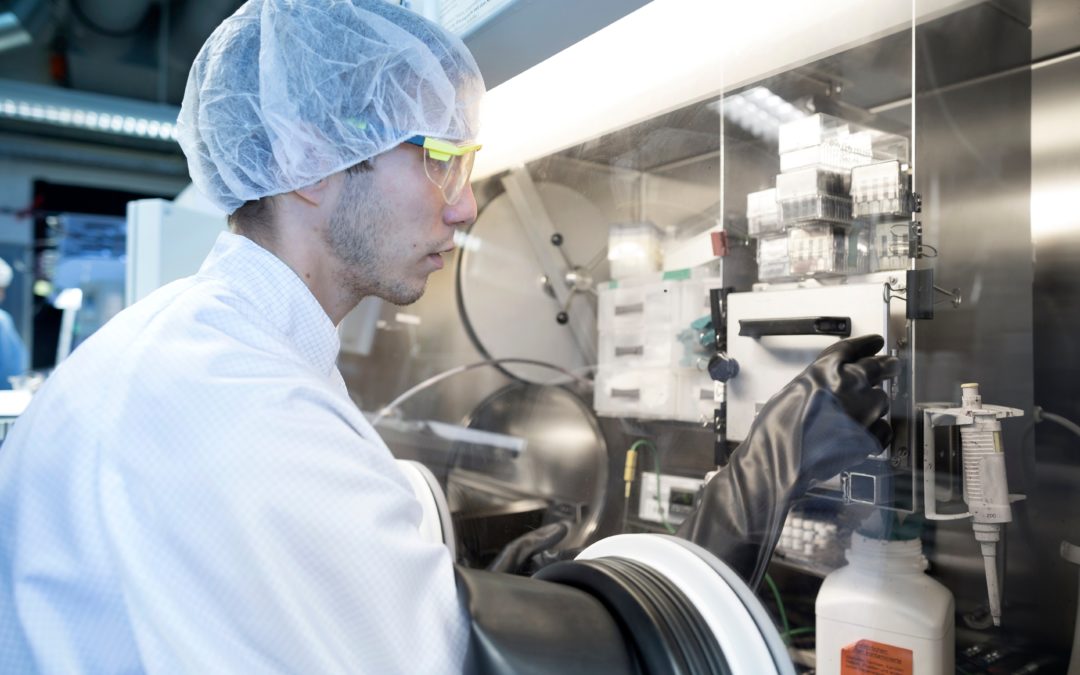One of the final decisions you’ll have to make in regards to cleanroom design is what additional features and technologies your cleanroom may require — and cleanroom glove boxes are necessary, and most often required, in specific stringent applications. Below, we’ll explore more about what a cleanroom glove box is, what it’s used for, and under which circumstances you may need to incorporate one into your cleanroom’s design.
What Is a Cleanroom Glove Box?
A cleanroom glove box is a sealed containment system that provides a controlled atmosphere for handling the contents within. In most cases, cleanroom glove boxes are manufactured with acrylic, static-dissipative PVC, and/or stainless steel, and they include one or more sets of gloves, allowing operators to work with objects while still upholding strict isolation protocols.
Two Main Types of Glove Boxes
There are several different types of cleanroom glove boxes, but they all generally fall into two broad categories: “isolation” and “containment.” The difference between these two types is based on what you hope to protect, and which type of pressure is needed to protect it.
- Isolation glove boxes use positive pressure to isolate sensitive materials from the elements and contaminants in their surrounding environment.
- Containment glove boxes use negative pressure to protect cleanroom operators from any hazardous materials or substances within the box.
Glove Box Capabilities and Features
As far as capabilities and features go, glove boxes operate very similarly to your overall cleanroom. They’re typically referred to as your primary engineering control (PEC) and provide ISO 5 classification within the containment system. It’s then placed within the cleanroom, or the secondary engineering control (SEC) which has a lower ISO Classification. They provide an additional layer of isolation and protection — meeting slightly more stringent cleanliness requirements.
For example, some of the most basic glove boxes capabilities and features include:
- Exhaust/recirculation connections and control
- Redundancy
- HEPA/ULPA filtration
- 2-4 glove ports (single or dual operator)
- Air locking
- Personnel & product protection
- Differential pressure
- Mobile or stationary
What Is a Cleanroom Glove Box Used For?
Glove boxes date all the way back to the 1940s, when they were used by the military to research radioactive materials. After that, they started gaining popularity in the medical field as a way to handle viruses and create various medications and vaccines. Today, cleanroom glove boxes’ controlled environments benefit a number of unique applications in a wide range of industries.
Which Applications Need Glove Boxes in Their Cleanroom Design?
The possibilities are truly endless here. You’ll likely see glove boxes in medical, laboratory, pharmaceutical, biological, chemical, and microelectronic cleanrooms most often, but they can also be incorporated into the cleanroom design for any other application that requires them.
Get the Cleanroom Design Features You Need at Angstrom Technology
Does your cleanroom require a glove box, or some other additional feature or technology? We can help! With years of proven experience, our team at Angstrom Technology is able to design a cleanroom that meets all of your facility’s specifications. Talk to one of our design engineers to get started today.



